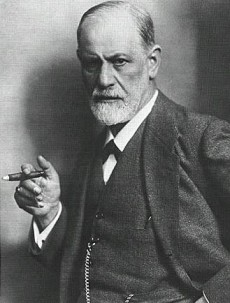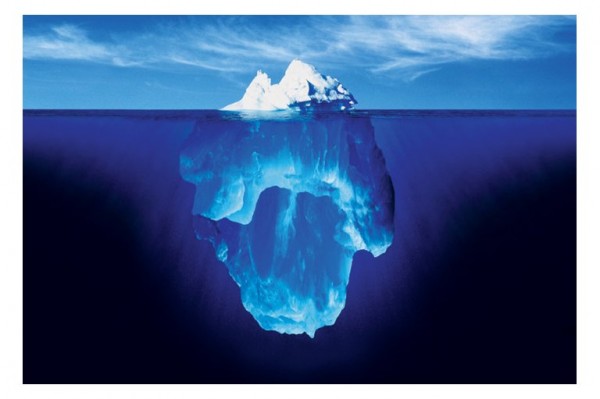I’ve been brewing this post series for a long time. Many readers have asked me to review the influential theories of dream formation that are still at work today. Unfortunately, in our Western culture, where dreaming has long been considered insignificant, advances have been slow due to a lack of funded research. And no one has yet offered a holistic theory of dreaming that accounts for how dreams form in the brain, what they mean, and why human cultures around the world draw significance from them. Instead, we have many competing theories, all of which look at different aspects of the dreaming world.
Basically, 21st century dream research is in a state of fragmentation.
As troubled as the field is as a whole, dream researchers are all are doing important work. One of the troubles with the field that everyone has to contend with is that any theory of dream formation drags along with it a theory of how dreams should be interpreted. This creates, more often than not, a self-referential system that highlights the data that are sympathetic with the theory but is blind to data that do not fit. This problem is easier to deal with in other scientific endeavors, but when the object of our study is our own consciousness, objectivity becomes difficult.
So, in this post series about the major theories of dreams now popular today, I recommend a both/and perspective. The success of one theory does not necessarily negate another, because they may be dealing with different aspects of dreaming cognition. This hasn’t stopped the debates and rivalries in the field of dream science, of course. But I hope to highlight the similarities of rival theories as well as their differences.
Freud – the Father of Modern Dream Research

Sigmund Freud (1856-1939) is the most popular dream theorist known today, and his ideas are still drawing water a century after he wrote his magnum opus The Interpretation of Dreams. Freud trained as a doctor and specialized in the brand new field of neurology, the study of the brain. But times were tough for Jewish scholars as Freud came of age in Vienna, so he established a private practice and focused on treating people with mental disturbances.
Freud had many research interests (such as the effects of cocaine on consciousness), but the study of dreams was his favorite because he believed dreams hold important clues to the way our minds work, which could lead to more effective ways of treating mental illness.
Freud’s theory of dreams is biological in origin, but psychological in practice. In a nutshell, Freud showed how dreams reflect basic instinctual drives that are common to all humans, but repressed in polite society. The Victorian flavor of Freud’s culture especially highlighted how tabooed thoughts and desires causes anxiety, phobias, and even mental illness in some individuals. Dreams provide a relief to this internal conflict by discharging these desires in a cloaked form that is acceptable to the conscious mind.
Contrary to popular belief, Freud did not suggest that all dreams are sexual in nature. Other conflicts can be expressed too, such as aggressive and selfish drives (Bulkeley, 1997, p. 17). These drives are clearly visible in children, Freud argued. When dreams express these hidden drives, they often reveal personal material from our childhood memories when our instinctual natures first clashed with the censorship of society.
The expression of these drives comes through our dreams as wishes. This is the central truth in Freudian dream interpretation. Dreams express the realization of our intentions, ambitions, and hopes, no matter how much we try to deny them.
Disguised Wishes Fuel Acceptable Dream Content
But of course our dreams do not show this baldly. Rather, Freud claimed that this under-layer of meaning, or latent content, is disguised as ordinary experiences that reflect our current life situation or recent past. This surface layer is the manifest content of the dream, and it is largely composed of day residue, or fragments of experiences we remember from the last few days.
Like all dream interpretation systems, Freud’s theory has a circular logic at its heart. When pressed how nightmares are really wishes, Freud somewhat lamely argued that the dreamer must be a sado-masochist, and the suffering in the dream is fulfilling that secret desire for humiliation and pain. And if that was shown to be untrue, then the dreamer must secretly want to prove Freud wrong, revealing another wish. Meh… there’s no way out.
Freud’s method of dream interpretation is psychoanalysis (a term, by the way, coined by lucid dreamer Fredrick van Eeden in 1892). He encouraged his patients to freely-associate the dream to older memories of their lives, to make connections between the past and the present, and to facilitate a transformation of the dream’s memory so it can more quickly do its discharging work in the brain.
Is Freudian Dream Theory Still Valid?
It’s easy to take potshots at Freudian dream theory, but keep in mind this was the first attempt to systematically interpret dreams in modern science and it’s inspired the entire field of psychology. Several aspects of Freud’s theory still ring of truth – especially the observation that dreams are often pointedly embarrassing and hint at tabooed material close to the dreamer’s heart, rather than reflecting random nonsense. Dreams have meaning, and we can scientifically study this meaning-making.
Also, his claim that dreams inter-splice long-term memories (childhood urges) with short-term memory (day residue) is a claim made by several current neuroscientists, pointing to the possibility that dreams have a role in learning. I will discuss more of the neuroscientific revival of Freudian thought in another post.
But first, we will next look at Freud’s contemporary Carl Jung, another founding father of modern dream studies.
Further reading:
The Psychology of Dreams by Kelly Bulkeley.
Interpretation of Dreams by the Man.

Ryan: this is a well written and informative article. I look forward to future posts. Please continue to share them on my FB page as well — http://www.facebook.com/Notes.From.A.Dreamer.
Great introduction, Ryan. I look forward to the rest of the series (esp. because I’ll be writing my dream final in the next six months!).
Nice brew Ryan. I like the humorous touch.
The Man’s Interpretation of Dreams is also a fine piece of literature, a pleasure to read.
Thanks, Ryan. Your post highlights the continuing relevance of dreams, and any introspective person can gain great insights into their own processes and motivations through dream interpretation, or just journalling our dreams.
What’s your experience of dreams and Post Traumatic Stree Disorder?
Thanks again!
Hugh